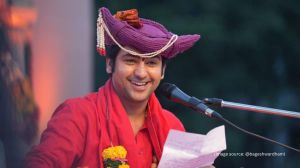Men and women kiss differently, research finds
A kiss, it turns out, is definitely not always just a kiss. As Valentine’s Day approaches...

A kiss, it turns out, is definitely not always just a kiss.
As Valentine’s Day approaches, research has begun shedding light on that most basic of all human expressions of love — the smooch — which has received surprisingly little scientific scrutiny.
“You’d think there would be a lot of research on kissing behavior. It’s so common,” said Susan Hughes, an assistant professor of psychology at Albright College in Pennsylvania, whose recent study is one of the first to probe snogging in depth. “But there isn’t. It’s really been ignored.”
In fact, much about love and attraction remains mysterious.
“This is a seminal paper,” said Helen Fisher, a Rutgers University anthropologist who studies love. “It’s remarkable that we don’t know more about these things. But love has not really been well studied until recently.”
In people, kissing to express affection is almost universal. About 90 per cent of human cultures do it.
One traditional view is that kissing, known scientifically as osculation, evolved from women chewing food for their children and giving it to them mouth-to-mouth, Fisher said.
But, she said, “I’ve never believed that,” adding that similar behavior is found in many species. Birds tap beaks. Elephants shove their trunks in each other’s mouths. Primates called bonobos practice their own version of French kissing.
Fisher believes kissing is all about choosing the right mate.
“There’s so much information exchanged when you kiss someone that I just thought it must play a vital role in mate choice, and this paper is elegantly showing that,” Fisher said.
A disproportionate amount of the brain, she noted, is geared toward interpreting signals from the mouth.
“When you look at the brain regions associated with picking up data from the body, a huge amount of the brain is devoted to picking up information from the lips and tongue,” she said. “Very little of the brain is built to pick up what happens to, say, your back. There have been case reports of people being stabbed in the back without even knowing it. But even the lightest brush of a feather on your lips and you feel it intensely.”
Hughes and her colleagues set out to probe some of the mysteries of lip-smacking by conducting a series of three in-depth interviews with 1,041 students at the University at Albany, in New York.
But Hughes and her colleagues had three hypotheses: kissing was for mate assessment, from breath, taste of saliva and so forth; kissing promoted bonding, because it raises oxytocin levels, related to interpersonal bonding and because it puts kissers at risk of contracting illness; and that kissing is simply a way of indicating sexual arousal, increasing the chance of having sex.
The researchers found support for all three theories, Hughes and her colleagues reported in the October issue of the journal Evolutionary Psychology, as well as provocative differences between men and women. Women place more emphasis on the taste and smell of the person they kiss than men do, the researchers found.
“That clues us in that females may be using it more to make mate assessments than men,” she said.
Women were also more likely to refuse to have sex with a partner unless they kissed first. More than half of the men said they would have sex without kissing first.



- 01
- 02
- 03
- 04
- 05



























